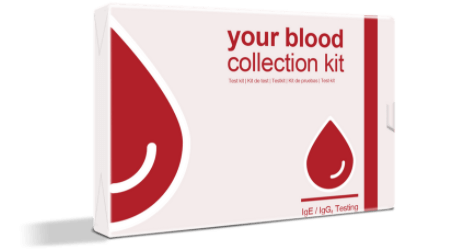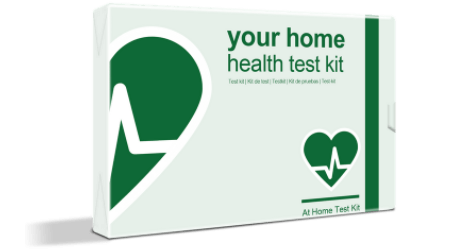There are quite a few methods out there that you can look at for food intolerance testing, some of which are more reliable than others, according to experts in the field. This is something you probably already know if you’ve been doing some research. One of the often disputed methods is that of IgG food sensitivity testing. A lot of the big names in food allergy and food sensitivity testing have given this kind of testing a bad reputation. This is also the case for the use of similar techniques, such as IgG4 testing, as well. This makes the well-researched reader hesitate for a moment before deciding what to do. If the experts seem to be arguing about the validity of IgG testing in general, how can you trust results as well as the testing process? Here are the facts that you should know about in order to show you what’s really going on and what you really do need to know about IgG and IgG4 when considering your needs for food sensitivity testing.
The truth about IgG food sensitivity testing
To understand the important role of IgG food sensitivity testing, you must first take a look at how it works with the body’s processes. During the testing process, the provided sample from you is tested against a wide variety of food samples that are in our lab. The presence of IgG (and its level) is what indicates that there is a sensitivity to the food, as this level indicates that the body doesn’t respond well to the food ingredient itself. Here are some of the common misbeliefs and what you need to know about them:
- It’s controversial in its results: There is a lot of news out there stating that the results are controversial. After all, some state that IgG is present even when there is no actual intolerance reported in clinical symptoms. This is not untrue, but there is more to think about in the actual test itself (marking the importance of IgG4 testing). The test is constantly being re-addressed and updated to make it even more and more accurate as more data comes in.
- It focuses on the presence of IgG in relation to certain food: The whole point of this kind of test is to determine what foods are creating the heightened presence and its level of IgG in relation to the food itself. These responses are then recorded as potential food sensitivities and intolerances and tested further to get more detail. The level is often the marking factor at what gets something logged as a food sensitivity, or not.
- It’s still developing in the world of science: This kind of testing has helped diagnose many food intolerances for people in the past, so it’s proof that it works successfully. Is it still developing in the often skeptical medical test world? Yes, definitely. But, it’s not something that has been unsuccessful and, in the world or research, that’s got to speak for something!
Why is IgG4 thought to be better?
There is more support and respect for the world of IgG food sensitivity testing when it comes to the use of IgG4. This is because it is designed to be a more heightened test and will give out more accurate results for those who need more clarity in their food sensitivities.
- It can indicate a heightened response in more detail: The presence of IgG4 is more accurate and tends to also help in indicating the actual severity of the food intolerance, which can be helpful for moving your elimination diet forward effectively at home.
- It’s more resistant to false positives: Since IgG4 is more accurate, it is resistant to false positives where a lot of the naysayers often find a problem with the supposed false positives with IgG testing. It’s important to note that false positives can happen across all testing methods for all sorts of conditions, however, including “official” medical testing (ex: pregnancy tests or even clinic-based allergy tests).
- It can be easy to detect during the test itself: Within the test itself, IgG4 levels are easier to monitor and markdown in terms of the food ingredients they’re heightened too, which means faster results.
What’s with the naysayers?
Still, all of this leaves people with questions about the naysayers out there who don’t support the use of IgG4 in testing. You’ll find plenty of content out there that states it’s not the most effective tool, but there is also contrast research that does support it.
In fact, some researchers say that it has moderate to good results when it comes to predicting diagnoses in those who are looking for support in identifying food sensitivities [1]. While it might not be as high as other tests claim, the science and the statistics back it up in this case study. While IgG testing has a so-so rating, the specification of IgG4 is thought to be moving in the right direction with clarity to match. This will even get more so as time goes on.
A huge thought behind the negativity is thought to be due to medical professionals not having a clear understanding of the natural background rate of IgG4 in the body. Since the levels seem to be heightened in everyone, the results aren’t as clear [1]. What this means, however, is that medical professionals must put some more time and effort into understanding the natural levels of IgG4 in patients so that they can use these specific results to help them understand what really is a high or just a normal spike for them.
Despite what a lot of resources say, there is a serious amount of science and effort into the study of IgG food sensitivity testing (as well as the preferred IgG4) and its role in the world of modern, alternative medicine. This will only expand and elaborate as time, science, and medical professionals focus their attention more.
References:
[1] Yu, K.H., Chan, T.M., Tsai, P.H., Chen, C.H. and Chang, P.Y., 2015. Diagnostic performance of serum IgG4 levels in patients with IgG4-related disease. Medicine, 94(41). Available at: https://www.ncbi.nlm.nih.gov/pmc/articles/PMC4616795/


